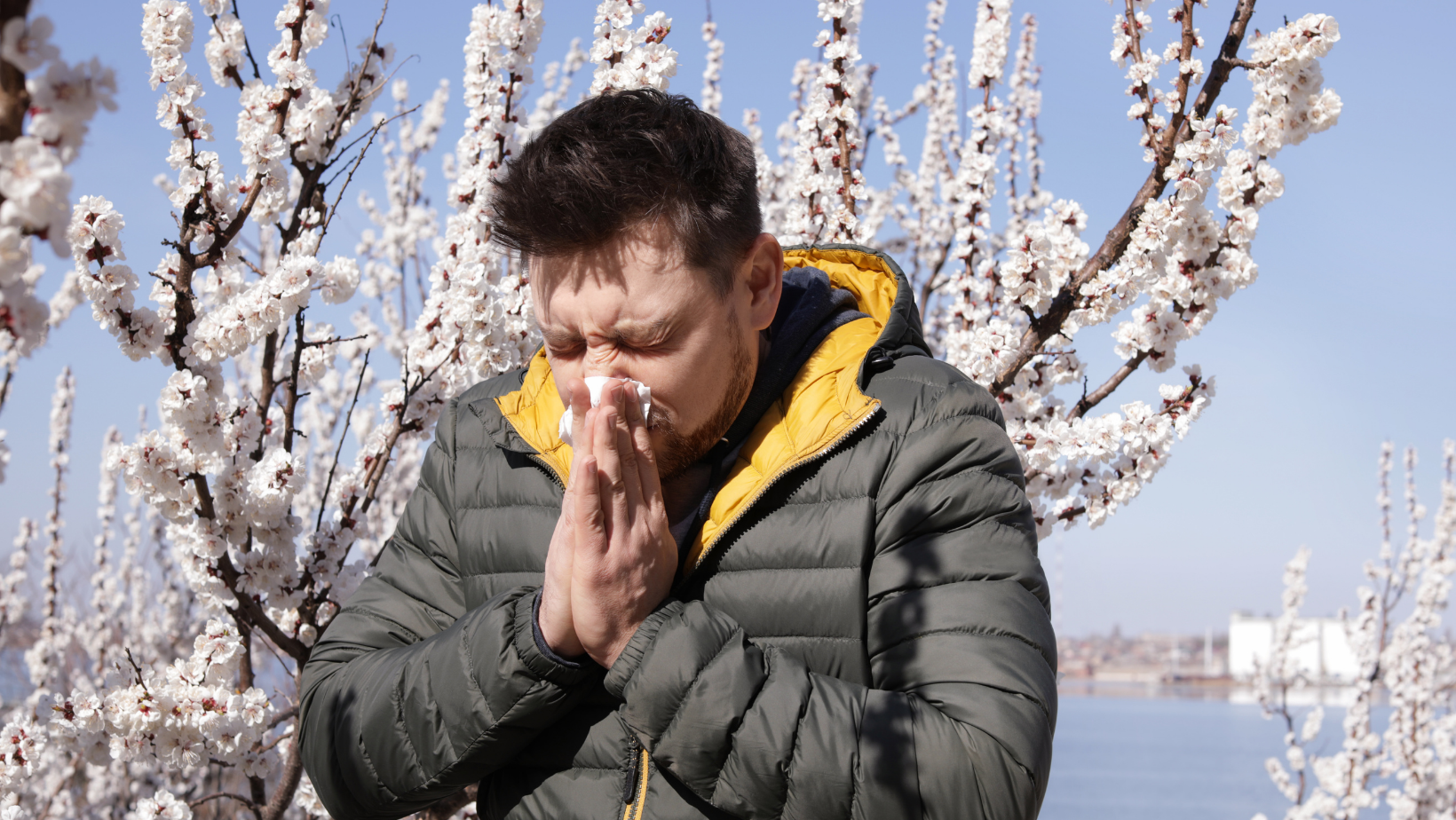Category
As the seasons change, many individuals grapple with the unwelcome arrival of seasonal allergies.

Have any questions?
If you have any questions, feel free to contact us at [email protected]. A member of our support team will help you shortly.
Share this blog
Fatigue
Energy
Stress
Sleep
As the seasons change, many individuals grapple with the unwelcome arrival of seasonal allergies. Commonly triggered by airborne allergens such as pollen, seasonal allergies can lead to a range of symptoms, from sneezing and itchy eyes to nasal congestion. This article explores identifying allergy triggers and effective strategies for managing symptoms to help individuals enjoy the changing seasons more comfortably.
Seasonal allergies, also known as hay fever or allergic rhinitis, are allergic reactions that occur at specific times of the year. The most common triggers for seasonal allergies are airborne pollens from trees, grasses, and weeds. When these pollens come into contact with sensitive nasal passages, the immune system may overreact, releasing histamines and manifesting allergy symptoms.
Spring often brings an increase in tree pollen levels. Common culprits include oak, birch, cedar, and pine trees. Individuals allergic to tree pollens may experience symptoms like sneezing, itchy eyes and a runny nose during this season.
Late spring and early summer see the rise of grass pollens, with species like Bermuda, Timothy, and Kentucky Blue grass being prevalent. Grass pollen allergies can trigger similar symptoms to tree pollen allergies.
Late summer and early fall are notorious for weed pollen allergies. Ragweed, sagebrush, and lamb's quarters are examples of weeds that release airborne pollens, causing allergic reactions in susceptible individuals.
Mold spores thrive in damp and humid conditions. While they can be present year-round, outdoor mold spore levels may rise during warmer months, contributing to allergic symptoms.
Dust mites, pet dander, and indoor mold can trigger allergy symptoms. While these allergens are not strictly seasonal, individuals may spend more time indoors during certain seasons, exacerbating indoor allergy issues.
Over-the-counter antihistamines can relieve common allergy symptoms by blocking histamines' action reducing sneezing, itching, and a runny nose.
Decongestant nasal sprays or oral decongestants can help alleviate nasal congestion, but prolonged use should be avoided to prevent rebound congestion.
Prescription or over-the-counter intranasal corticosteroids can reduce inflammation in the nasal passages, relieving symptoms like nasal congestion, sneezing, and itching.
Identifying specific triggers and avoiding them can significantly reduce allergy symptoms. This may include staying indoors during peak pollen times, using air purifiers, and keeping windows closed.
Allergy shots or sublingual tablets prescribed by an allergist can help desensitize the immune system to specific allergens, providing long-term relief.
Over-the-counter or prescription eye drops can alleviate itchy and red eyes caused by seasonal allergies.
Keeping living spaces clean, using allergen-proof bedding, and regularly washing hands and clothes can minimize exposure to indoor allergens.
Seasonal allergies, triggered by airborne pollens and other allergens, can significantly impact an individual's quality of life during certain times of the year. Individuals can proactively address symptoms and enjoy the changing seasons with greater comfort by identifying specific allergy triggers and employing effective management strategies. Seeking guidance from healthcare professionals, including allergists, can provide personalized insights and treatment options for more severe cases. With the right approach, managing seasonal allergies becomes an achievable goal, allowing individuals to embrace the beauty of each season without the burden of allergic discomfort.